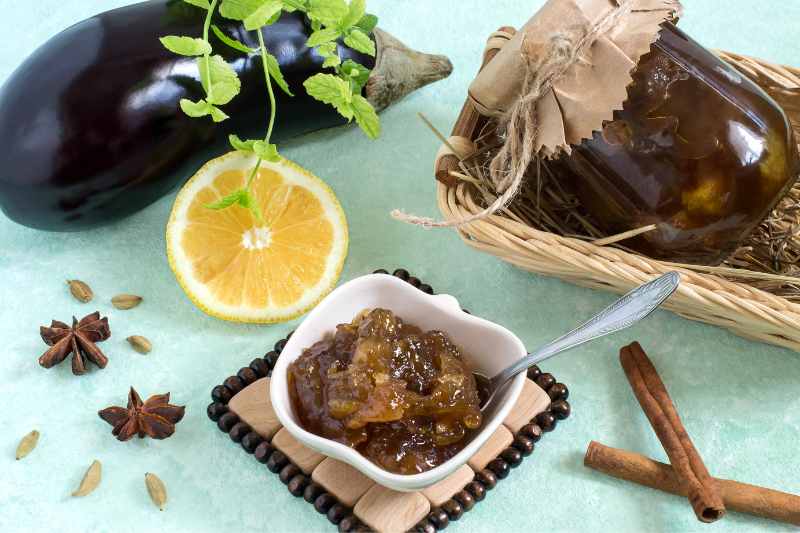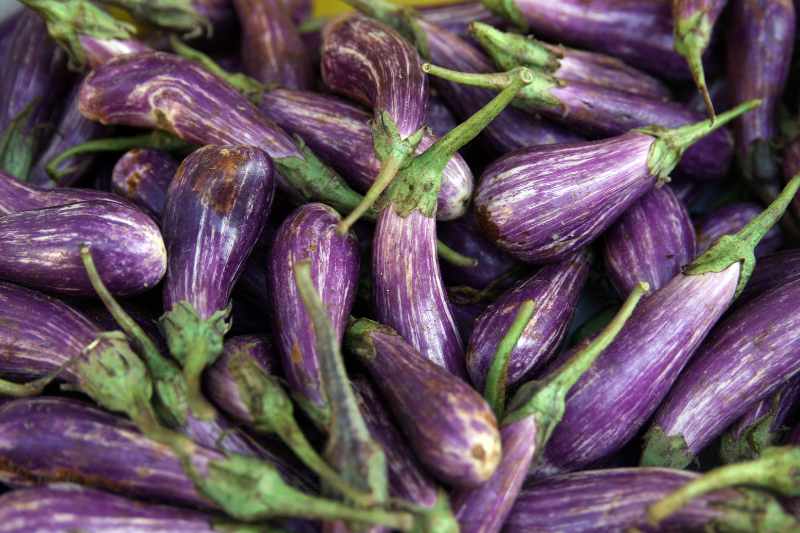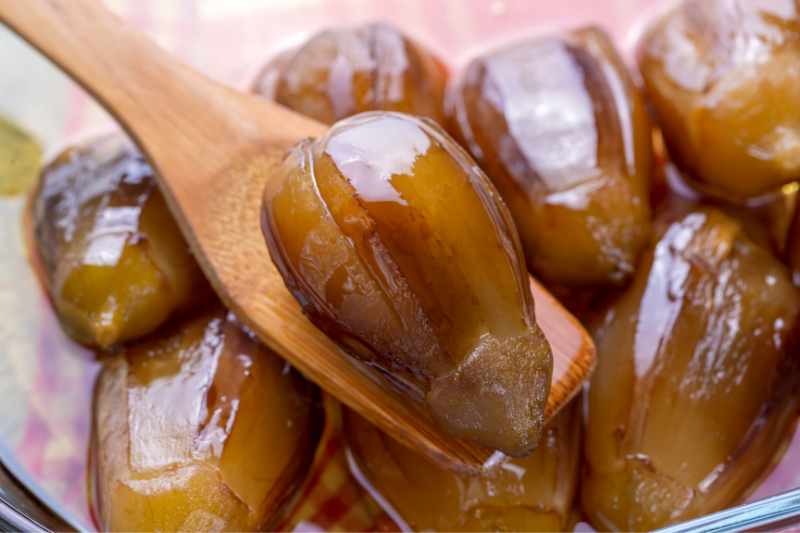Aubergine jam, a strange idea? Not so much when you know that aubergine is, in a botany sense, like tomato or pepper, a fruit! Aubergine jam is even a speciality of southern Turkey that I discovered during my travels in that country. It has a unique taste and surprises with its sweetness.
Want to change classic jams and give your breakfast toast an original spread? Here is the recipe for aubergine jam!

What are its origins?
Aubergine, native to India, conquered Europe via the spice routes and became a staple vegetable throughout the Mediterranean.
This delicious jam is found in Antalya, on Turkey's southern coast, where it became a speciality. It is called Patlican reçeli. It is also widely eaten in Azerbaijan and appears in Jewish cuisine. It is enjoyed either at breakfast or as a syrupy dessert.

Which aubergine to use for the jam?
Traditionally, for aubergine jam, very small eggplants are chosen because the pieces remain entire. Small aubergines have a thinner skin, a less bitter flesh and fewer pips: all ideal for making this jam. But, above all, this jam is normally made with aubergines whole, although you can blend them if you prefer a smoother jam.
Dwarf aubergines, like aubergine 'Ophelia', are therefore suitable, or varieties with elongated fruits such as 'Little Fingers'. Other mini aubergines like 'Slim Jim' also work, but round aubergines are best avoided as they are awkward to jar.

When to harvest aubergines?
Use fruits at full ripeness, smooth, glossy and well coloured. Aubergines should be firm to the touch. Depending on region and variety, harvest begins from mid to late July until September or October. That is when the fruit reaches its optimal ripeness, offering a dense flesh and a flavour full of character, perfect for jam.
Ingredients
- 1 kg small aubergines
- 1 kg light or cane sugar
- juice of one lemon
- 500 ml water
- 1 vanilla pod
Method
- Wash aubergines and remove green peduncle. Peel.
- Cook them by steaming or in water until tender. (N.B.: you can soak aubergines overnight in salted water then rinse to reduce bitterness).
- Remove from water and drain in a colander
- Make a syrup with water and sugar in a large heavy-based saucepan, then once sugar has dissolved,
- Arrange aubergines, add lemon juice and the split vanilla pod.
- Cook over very low heat for about 1 hour, turning aubergines, until candied.
- Roughly blend everything if you want a smooth jam or if it will be used only at breakfast.
- Pour jam hot into sterilised jars, placing aubergines upright if kept whole. Close jars and turn them upside down until completely cool.
- Label with date.
Storage is the same as for any jam: in a dark place, at room temperature or cool, such as pantry, cellar or in a cupboard.
Enjoy your jam at breakfast, or very chilled with fresh white cheese or vanilla or cardamom ice cream... delicious!

My tips
Variations : Aubergine jam can incorporate, as in the Mediterranean, many spices for an even more pronounced and original note: cinnamon, clove, star anise, cardamom or ginger to replace vanilla.
Many recipes add a little honey, which gives an even richer, sweeter texture (in which case reduce sugar accordingly).
If you do not like whole fruit pieces, you can lightly blend the mixture at the end of cooking. You can also cut aubergines lengthwise into quarters, though that loses some of the traditional character of the recipe.
For a first attempt, try cooking a small batch to see if you like its particular taste. For larger quantities, increase ingredients proportionally.
About vegetable jams
Here we know well the green tomato jam (excellent and ideal to use unripe tomatoes at end of summer), but new culinary trends draw on other vegetables. This is the case with cucurbits, notably pumpkin or squash, with which one can make delicious sweet jams when harvests are abundant. Pumpkin jam has its origins in Brazil, where it is called Doce de Abóbora, and appears in Portuguese cuisine: it is often paired with oranges and cinnamon, but apples or dried fruits such as walnuts and raisins can also be added for a comforting winter jam!
These offbeat jams can also accompany certain hard cheeses, such as sheep's milk cheese.
































Comments